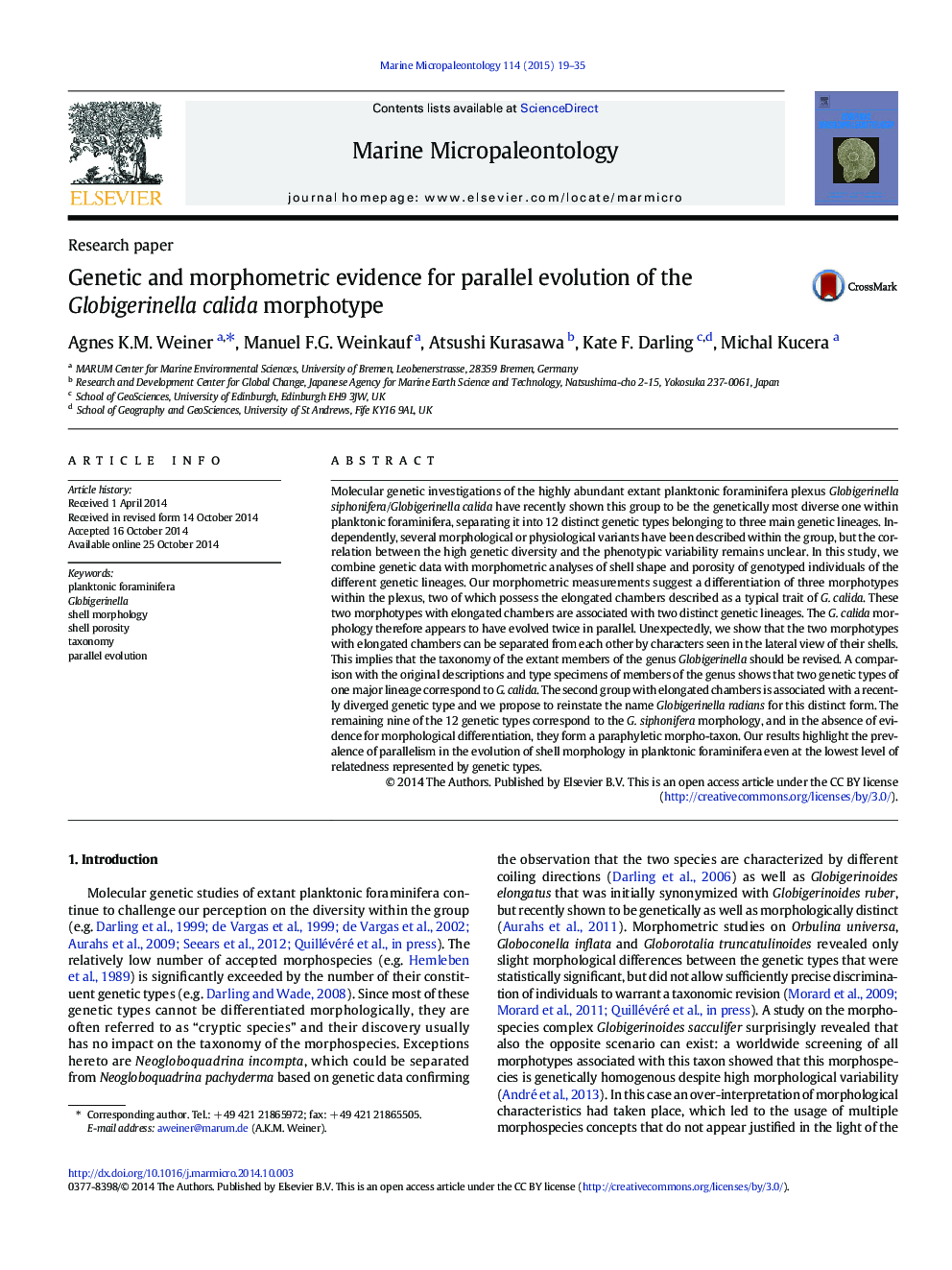| Article ID | Journal | Published Year | Pages | File Type |
|---|---|---|---|---|
| 6448523 | Marine Micropaleontology | 2015 | 17 Pages |
Abstract
Molecular genetic investigations of the highly abundant extant planktonic foraminifera plexus Globigerinella siphonifera/Globigerinella calida have recently shown this group to be the genetically most diverse one within planktonic foraminifera, separating it into 12 distinct genetic types belonging to three main genetic lineages. Independently, several morphological or physiological variants have been described within the group, but the correlation between the high genetic diversity and the phenotypic variability remains unclear. In this study, we combine genetic data with morphometric analyses of shell shape and porosity of genotyped individuals of the different genetic lineages. Our morphometric measurements suggest a differentiation of three morphotypes within the plexus, two of which possess the elongated chambers described as a typical trait of G. calida. These two morphotypes with elongated chambers are associated with two distinct genetic lineages. The G. calida morphology therefore appears to have evolved twice in parallel. Unexpectedly, we show that the two morphotypes with elongated chambers can be separated from each other by characters seen in the lateral view of their shells. This implies that the taxonomy of the extant members of the genus Globigerinella should be revised. A comparison with the original descriptions and type specimens of members of the genus shows that two genetic types of one major lineage correspond to G. calida. The second group with elongated chambers is associated with a recently diverged genetic type and we propose to reinstate the name Globigerinella radians for this distinct form. The remaining nine of the 12 genetic types correspond to the G. siphonifera morphology, and in the absence of evidence for morphological differentiation, they form a paraphyletic morpho-taxon. Our results highlight the prevalence of parallelism in the evolution of shell morphology in planktonic foraminifera even at the lowest level of relatedness represented by genetic types.
Related Topics
Physical Sciences and Engineering
Earth and Planetary Sciences
Palaeontology
Authors
Agnes K.M. Weiner, Manuel F.G. Weinkauf, Atsushi Kurasawa, Kate F. Darling, Michal Kucera,
